Chapter 6
![BCM E2 PM [Plan Development] Banner](https://blog.bcm-institute.org/hs-fs/hubfs/BCM%20E2%20Blog%20Banner/BCM%20E2%20PM%20%5BPlan%20Development%5D%20Banner.png?width=750&height=150&name=BCM%20E2%20PM%20%5BPlan%20Development%5D%20Banner.png)
Implement Business Continuity Plan (BCM Plan) Development Phase for Bandtree
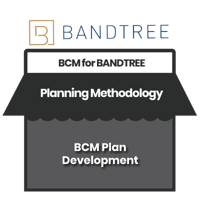
In the journey to achieving resilience, one of the most crucial elements for Bandtree Sdn Bhd is the development of a comprehensive Business Continuity Plan (BCM Plan).
This plan is not just a set of guidelines, but a strategic document that ensures the company's ability to recover and continue operations in the face of disruptions.
The Plan Development Phase is essential in transforming BCM strategies into actionable plans that address specific business continuity needs at all levels of the organisation.
This chapter will explore the stages involved in developing a BCM Plan, highlighting practical steps and real-world examples pertinent to Bandtree.
What Does Plan Development Entail?
The development of a BCM Plan at Bandtree involves a systematic process, broken down into several stages. Each stage plays a crucial role in ensuring the final plan is robust, complete, and tailored to Bandtree’s specific operational requirements.
Below is an outline of the key stages involved in the BCM Plan development, with practical examples to illustrate how these steps align with Bandtree’s objectives:
1. Determination of the Organisation of the BC Plan Document
- Designing and Developing the BC Plan Template
The first step in the BCM Plan development process is determining how the document will be structured.
At Bandtree, the template must be designed to suit the company’s specific business functions and recovery strategies.
The template should allow for easy input from individual business units (BUs) and provide a uniform structure to ensure consistency across the organisation.
Example: For Bandtree, a BC Plan template may include sections for risk assessments, recovery procedures, resource requirements, and contact information for key personnel across different departments such as Facilities Management, IT, and Legal.
- Determining the Recovery Organisation
This stage involves identifying the teams and individuals responsible for executing recovery strategies.
At Bandtree, the recovery organisation could involve a dedicated crisis management team, including senior managers, business unit heads, and external stakeholders.
The recovery organisation should be clearly defined to ensure clarity of roles and responsibilities during a crisis.
Example: Bandtree’s recovery organisation could designate the Head of Operations as the BCM Plan Lead, with the Head of IT and Facilities as key recovery team members for their respective functions.
2. Conducting a BC Plan Writing Workshop to Guide Plan Writers
A key step in ensuring the development of a high-quality BCM Plan is conducting a BC Plan writing workshop. This workshop should be designed to educate plan writers and provide guidance on how to complete the BC Plan template.
Example: Bandtree could hold a workshop for BCM Coordinators from each business unit (e.g., Property Management, IT, and HR). During this workshop, participants would learn about the expectations of the BCM Plan, the types of disruptions that need to be accounted for, and how to articulate recovery strategies clearly within the plan.
- Completion of the Plan Template by Individual BU BCM Coordinators
Each Business Unit (BU) BCM Coordinator is responsible for completing the plan template for their unit. This involves gathering information about critical functions, dependencies, recovery time objectives (RTOs), resource needs, and contact information for key personnel.
Example: The Property Management Unit at Bandtree would complete their section by detailing how they would continue managing tenant needs and maintaining building operations during a disruption, specifying the RTO for each critical activity.
3. Finalisation of the BC Plan Production
Once all sections are completed, the BC Plan must undergo a final review and validation process. This ensures that the content is accurate, comprehensive, and aligned with Bandtree’s strategic goals.
- Validation by BU BCM Coordinators and Heads of Business Units
The completed BC Plan sections should be reviewed by the BU BCM Coordinators and the Heads of Business Units for completeness and coverage. This review process ensures that each business unit’s needs are fully integrated into the BCM Plan.
Example: For Bandtree, the Head of IT and Head of Property Management would review the sections related to their departments, ensuring that critical recovery actions are clearly outlined and that there is no overlap or gaps between departments.
Summing Up ...
The Plan Development Phase is a vital component of Bandtree’s overall BCM strategy. By structuring the BCM Plan systematically, involving key stakeholders, and thoroughly reviewing each section, Bandtree ensures that the final document is practical, actionable, and tailored to the organization’s specific needs.
This development phase not only strengthens Bandtree’s preparedness for disruptions but also fosters a culture of resilience across all levels of the company.
With a robust BCM Plan in place, Bandtree is better equipped to manage crises and recover swiftly, safeguarding its operations and reputation in the face of adversity.
Resilience Redefined: Implementing BCM at Bandtree Sdn Bhd Brunei |
||||
| eBook 2: Implementing Business Continuity Management |
||||
| C1 | C2 | C3 | C4 | C5 |
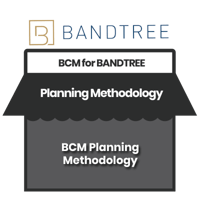 |
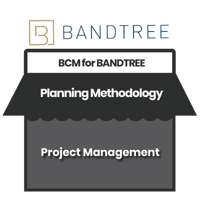 |
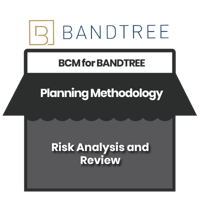 |
 |
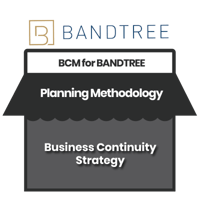 |
| C6 | C7 | C8 | C9 | C10 |
 |
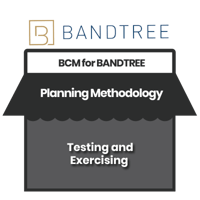 |
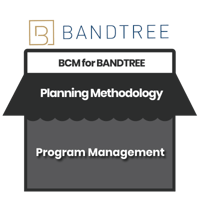 |
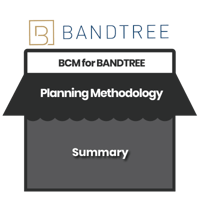 |
 |





![Register [BL-B-3]*](https://no-cache.hubspot.com/cta/default/3893111/ac6cf073-4cdd-4541-91ed-889f731d5076.png)



![FAQ [BL-B-3]](https://no-cache.hubspot.com/cta/default/3893111/b3824ba1-7aa1-4eb6-bef8-94f57121c5ae.png)
![Email to Sales Team [BCM Institute]](https://no-cache.hubspot.com/cta/default/3893111/3c53daeb-2836-4843-b0e0-645baee2ab9e.png)





